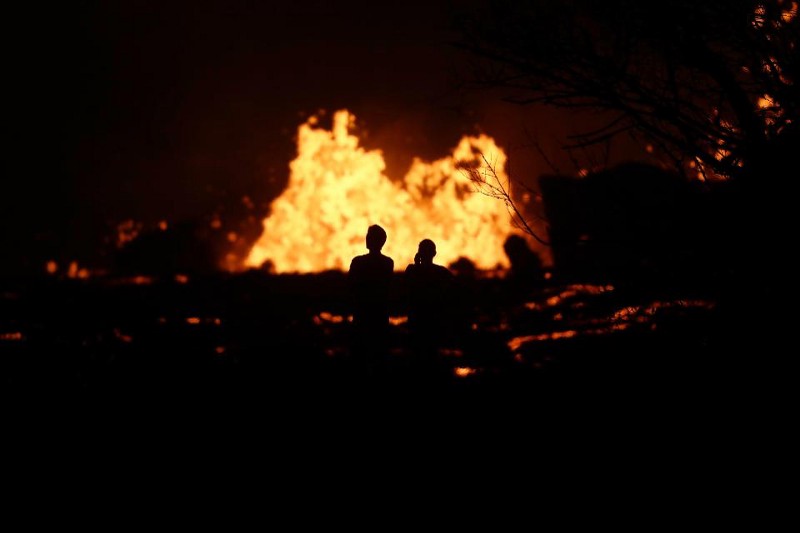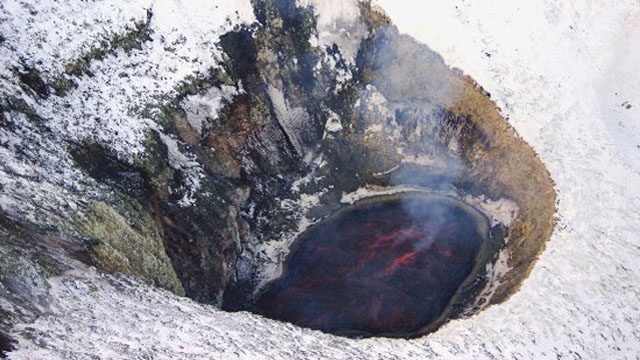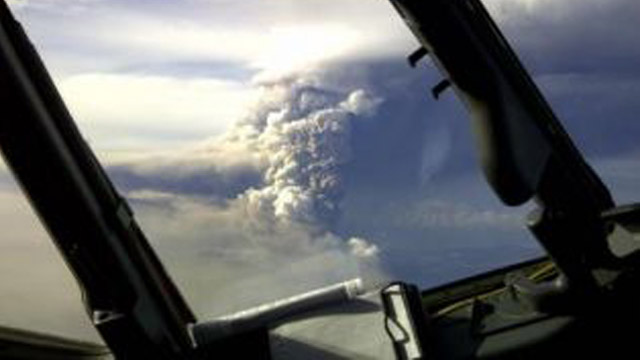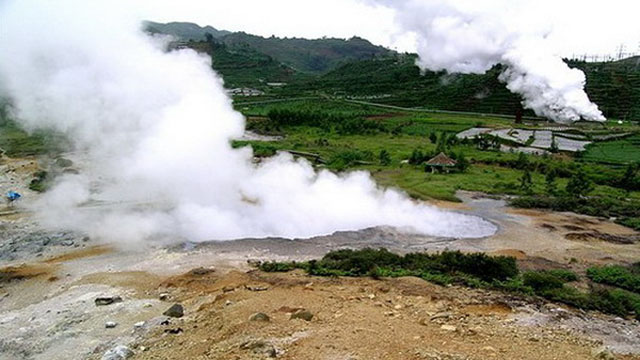Alert level goes up at Taal in the Philippines
The steaming vent area at Taal in the Philippines in September 1965, when the volcano produced a VEI 4 eruption.
The Philippine Institute of Volcanology and Seismology (PHIVOLCS) has raised the alert status at Taal to Level 2 (of 4) and officials in the Philippines are getting ready if the volcano does come back to life for the first time since 1977. Taal is a mere 48 km (30 miles) from Manila – the capital of the Philippines and home to over 21,000,000 people in the metro area of the city. This location made Taal one of the UN/IAVCEI Decade Volcanoes as a large eruption from the volcano could be devastating.
The volcano has been quiet for almost 33 years now, but last year Taal began to show signs of life including increased steam emissions and bubbles (indicating degassing) in the volcano’s crater lakes. Today, however, PHIVOLCS is reporting over 30 high frequency seismic events underneath the volcano and a greater increase in steam emissions, prompting the elevation of the Alert Status from 1 to 2. Now, earthquake swarms have occurred before at Taal over the last decade, and there have even been muddy geysers that have popped up in the crater lakes – these geysers prompted the last Level 2 alert in 2006 (thanks to deformation and increased seismicity that came with the geyser activity). Many of the eruptions over the last 40 years have been VEI 1-2 explosive events that were strongly influenced by the presence of the crater lakes (phreatic or phreatomagmatic eruptions), as the 1976-77 eruption produced copious ash-and-steam clouds. However, in 1965-6, Taal had a series of VEI 3-4 eruptions that killed at least 200 people. This eruption produced a 15-20 km ash plume after starting as basaltic spatter (sound familiar?). Additionally, a 1911 eruption produced a tsunami and killed almost 2,000 people.
You’d think with a volcano with as much of a deadly history as Taal that people would avoid it, however, Taal is actually a popular tourist destination thanks to its proximity to Manila. Volcano Island, in the middle of the largest crater lake, is now off limits due to its constant degassing, but much of the rest of the area can be visited. This tourism, combined with the high population within 100 km of the volcano means that PHIVOLCS will have its hands full if the volcano shows signs that it might have a significant eruption. PHIVOLCS does have hazard maps for Taal showing the zones of highest danger for ballistics, base surges (pyroclastic flows – the #1 hazard according to PHIVOLCS) and lakewater escape (due to seismicity) but one would imagine that ash would be a major problem if the volcano erupts explosively. Luckily, the volcano is closely monitored for seismic changes, lake temperature and chemistry and deformation from the Taal Volcano Observatory. For those intrepid webcam watchers, there are a few Taal webcams out there to check out.




